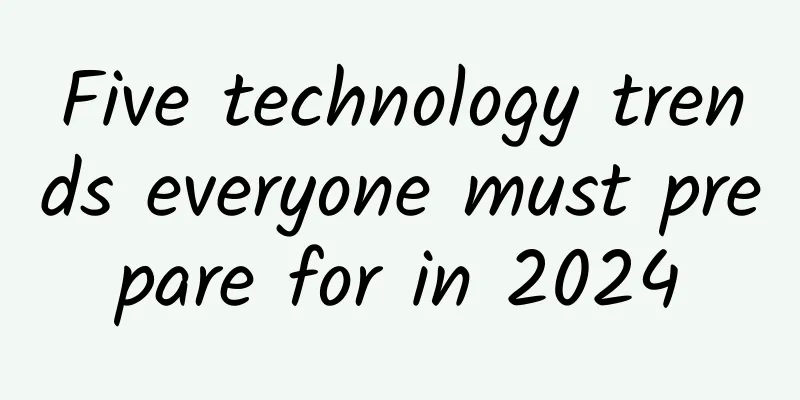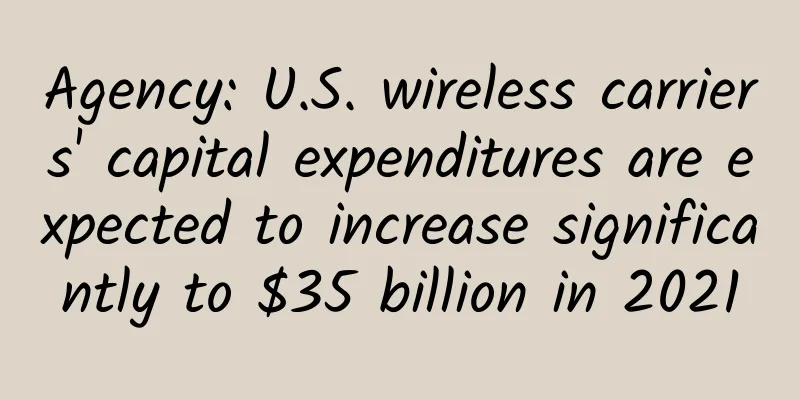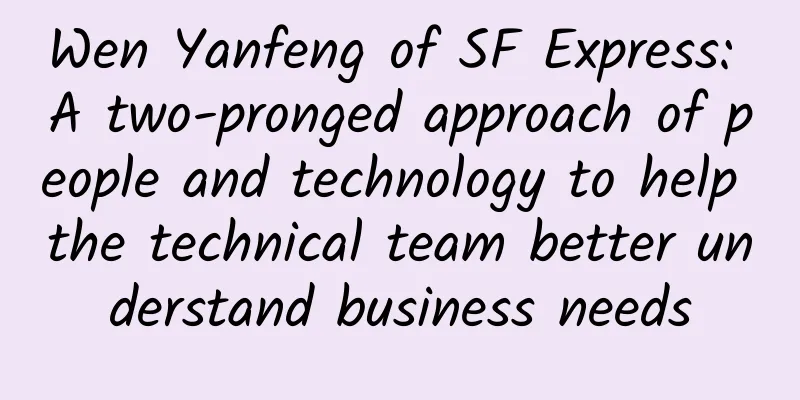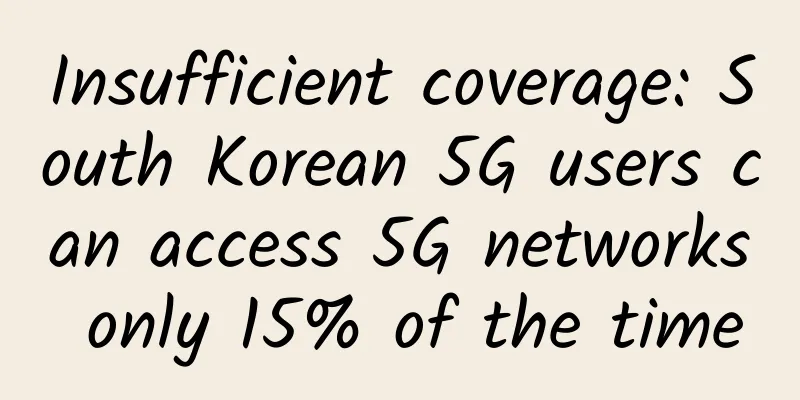Five technology trends everyone must prepare for in 2024

|
Machine intelligence, the blurring of the lines between the real and the virtual, and the ongoing evolution of the Internet will all fundamentally affect our lives. Perhaps most important will be finding ways to continue to grow and prosper while minimizing the damage we do to the environment—and perhaps even reversing some of the damage done in the past. Here’s my overview of these game-changing trends and my predictions for how each will impact life, society, and the planet. AIGC - Everyday Automation2023 is the year AIGC breaks into the mainstream, and 2024 will be the year the world realizes how powerful and useful it can be. Today, if you’re not tech-savvy, just the word AI can fill you with fear — if you’re not worried about it taking over the world or destroying humanity, you’re probably nervously waiting for it to take your job and make you redundant. But as AIGC finds its way into more applications we use every day, from search engines to office software, design packages, and communication tools, people will gradually understand its potential. Used properly, it's like having a super-intelligent personal assistant at hand, making us more efficient, faster, and more productive. Most importantly, by handing over our daily mental labor—getting information, scheduling, managing compliance, organizing ideas, organizing projects—to AI, we will find ourselves with more time to use our truly human skills. We will spend more time creating, exploring new ideas and original thinking, or communicating with humans, rather than programming machines. The genie is out of the bottle, and while there are still some undeniable challenges to overcome around ethics and regulation, I believe 2024 will be the year everyone begins to understand how transformative AI will be to our lives. The fusion of physical and virtualThe real and the digital are becoming increasingly intertwined, with technologies like AR, VR and immersive internet breaking down barriers between the physical world and the digital realms in which we are spending more and more of our time. More than ever before, we exist in virtual environments as digital avatars. This is also true at work, where we collaborate remotely through platforms like Zoom, Teams and Slack, and online gaming and esports are more popular than ever. We use social apps like TikTok and Instagram to create virtual spaces where we share moments from our “real” lives – carefully curated and filtered to create digital personalities that become our virtual selves. Across industries, we see this concept emerge in the form of digital twins – virtual representations of real-world objects, systems or processes. This can be as simple as a single component or as complex as an entire city or even an entire ecosystem. Importantly, the digital twin is built from data taken from its real-world twin. Advances in genomics science mean we can break down the fundamental essence of life into digital code that can then be manipulated and recreated in the real world to design new drugs and eradicate disease. In 2024, we’ll continue to see the distinction between the real and virtual worlds become less and less distinct, meaning that the digital is becoming more and more real, and the real is becoming as flexible and malleable as the digital. Sustainable development technologySustainable technologies will continue to take centre stage in 2024 as countries and businesses continue to work towards net zero commitments, while individuals will increasingly use technology to minimise their personal impact on the environment. Sustainable technologies include greener ways of doing things we already do – like electric cars, bicycles, and public transportation, which will continue to increase their market share in 2024, as well as new solutions to environmental issues, such as carbon capture and storage, and green and renewable energy technologies. The circular economy will become an increasingly important concept as durability, recyclability, and reusability are embedded directly into products during the design phase. The tech world will further embrace ideas such as green cloud computing, in which infrastructure and services prioritize reducing energy consumption and carbon emissions, and sustainable applications – software tools designed to help us live in a more environmentally friendly way. Challenges facing developers and users of sustainable technologies during 2024 will include the need to develop ethical and sustainable methods to source and extract the materials needed to manufacture devices, infrastructure needs arising from changing consumer habits (such as the adoption of electric vehicles), and potential gaps in the ability of different geographic or socioeconomic groups to access green alternatives. We will also become increasingly wary of greenwashing – ostensibly efforts designed purely to generate positive PR around a particular technology. Network ResilienceResearch shows that one in two businesses has been the victim of a cyberattack in the past three years, and the cost of these attacks to industry is expected to grow to more than $10 trillion by the end of 2024. In the face of this rapidly growing threat, solutions designed to strengthen our defenses and provide us with the ability to defend ourselves are high on every business’s must-have list. Cyber resilience goes beyond cybersecurity, though, as it also encompasses measures that can be taken to recover and ensure continuity if defences are breached or due to circumstances beyond our control. This may mean establishing remote working procedures to ensure the business can function when employees are unable to come to a central location – a solution that may not traditionally be considered an element of cybersecurity. Automation of cyber defenses through AI and ML, integrated frameworks that combine security measures with continuity protocols, and awareness of social factors from social engineering attacks to PR firefighting are essential elements of any cyber resilience strategy. Cyber threats are becoming increasingly sophisticated, and the competition to bring new solutions to market that leverage disruptive technologies such as AI is intensifying. This ensures that cyber resilience will become an increasingly prominent trend in both business and consumer technology throughout 2024. Quantum computingThere has been a lot of buzz around quantum computing for a while now, and I believe 2024 will mark the year that quantum computing transitions to tangible benefits. Quantum computers are able to perform a large number of calculations simultaneously by exploiting the weird and wonderful elements of quantum physics, such as entanglement and superposition, which allow them to operate using quantum bits (qubits) that can exist in multiple states at once, rather than in a 1 or 0 state like traditional computer bits. Early investors in quantum technology include banks and financial services firms, which hope to enhance the capabilities of AI systems developed in recent years for fraud detection, risk management and high-frequency trading. Quantum computing won’t speed up every task we do with computers, but I think in 2024 we’ll start to see benefits from its applications in a variety of compute-intensive fields, including drug discovery, genome sequencing, cryptography, meteorology, materials science, optimizing complex systems like traffic flow in large cities, and even the search for extraterrestrial life. These are all areas that hold tremendous potential for overcoming the challenges facing us and our planet, and I am very excited to see what breakthroughs will be achieved in the near future with the help of quantum computing. |
<<: The current status and future prospects of 5G in the IoT market
>>: Six big pitfalls encountered when calling third-party interfaces
Recommend
The role of 5G in realizing the next generation of smart cities
5G can improve the quality and performance of urb...
Will the popular SD-WAN really kill MPLS?
[[419147]] Arguably, no network technology has re...
Wi-Fi 6 and cellular networks are powering a hyperconnected future
Wi-Fi 6 is maturing into a new role as a compleme...
From TCP to Socket, a thorough understanding of network programming
For students who are engaged in program developme...
The Internet’s “high-salary list” has been revealed, will the Internet of Things take over?
"Reuters reported that Huawei plans to incre...
edgeNAT VPS/dedicated servers are 20% off for monthly payment and 30% off for annual payment. Hong Kong VPS bandwidth upgrade price remains unchanged
edgeNAT is a Chinese host provider established in...
TCP Things 1: TCP Protocol, Algorithm and Principle
TCP is a very complex protocol because it has to ...
[Black Friday] DediPath: Dedicated servers in multiple data centers in San Jose/Los Angeles/New York/Dallas starting from $39/month
A few days ago, we shared the Black Friday VPS pr...
my country has built 2.64 million 5G base stations, and a step-by-step optimized computing power supply system has been initially established.
The high-quality development of information and c...
AvenaCloud: €11.5/year - 1GB/10GB SSD/100M unlimited traffic/Moldova complaint-resistant VPS
AvenaCloud is a Moldovan hosting company establis...
Why is the TCP connection a three-way handshake, not a two-way handshake or a four-way handshake?
The text is reproduced from the official account:...
Do you really understand the connection control in Dubbo?
[[422543]] This article is reprinted from the WeC...
Time is running out for NTP: Network Time Protocol may be gone forever
[51CTO.com Quick Translation] Everyone is enjoyin...
Huawei offers the "Olympus Award" to promote basic technology research and ecosystem construction in the data industry
During the 2019 Global Data Infrastructure Forum,...
Investigating the environmental and social impacts of 5G technology
The emergence of 5G technology has the potential ...









